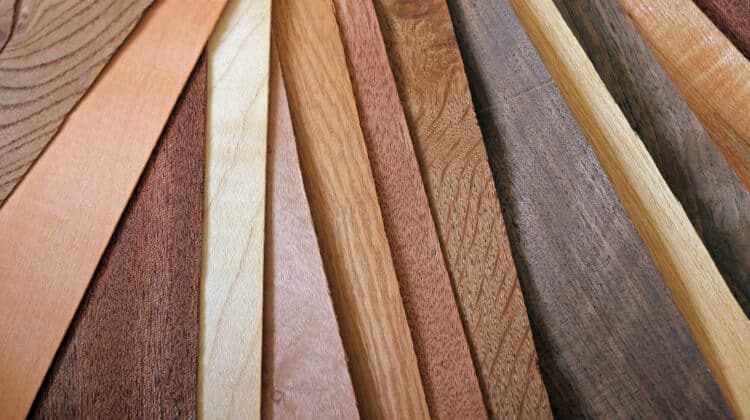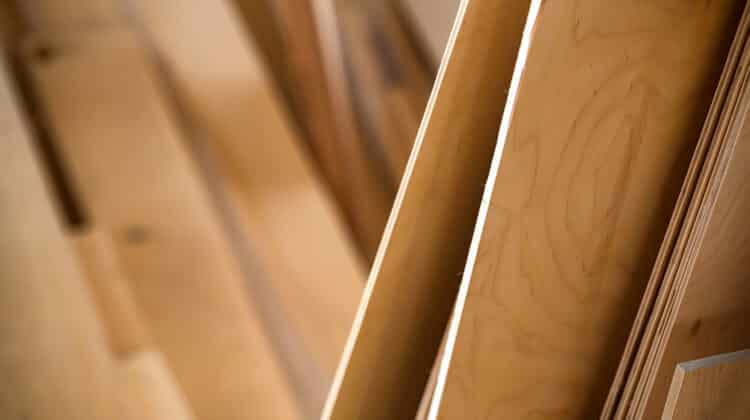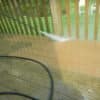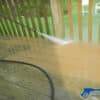Do you want to find out what plywood is used for roofing?
A typical roofing system comprises various materials and components connected to protect your home from harsh weather conditions.
One vital component is plywood, which builders especially like for interior and exterior applications. They prefer it because of its low cost, resistance to water, structural stability, and many more.
The strength of plywood is trustworthy enough to provide support to the entire roofing system.
The type of plywood used for roofing is called exterior plywood, which is easy to install and reasonably priced.
Table of Contents
What are the various types of plywood?
Exterior plywood
This type of plywood is particularly designed for outdoor use. It can withstand heavy rains, forceful snow, hot sun, and strong winds.
Exterior plywood is made by using weather-resistant glue, which makes it durable. There are many layers to make it stronger and make it able to support heavier weights without deforming.
It comes from hardwood like oak or walnut, and this way, it can resist harsher climates.
Construction structural plywood
This type of plywood has multi-purpose building applications due to its durability, performance, and strength. It is a type of exterior plywood and is ideal for roofing.
One example is Marine Grade plywood that is for boats and boat parts.
Construction structural plywood has two types: A-Bond and B-Bond.
A-Bond is more durable and stronger, and B-Bond is for exterior applications.
Hardwood plywood
This type of plywood comes from various hardwood trees. They consist of three to seven layers that include birch, maple, oak, walnut, and other kinds of hardwood.
Hardwood plywood is made for strength and durability and used for furniture, sporting equipment, packing cases, etc.
Since it is strong and durable, it is an ideal material for roofing and outdoor usage.
General plywood
This type of plywood is similar to structural plywood, wherein it also has good performance and is strong.
General plywood is for indoor purposes like windows, doors, and tables. It also is used for roofing but requires regular maintenance.
CDX grade plywood
This type of plywood has become a popular selection for roofing. The meaning of CDX is:
-
- C – Refers to the grade in front of the sheet of plywood
- D – Refers to the grade at the back of the sheet of plywood
- X – Refers to the kind of glue for bonding the layers of wood
The plywood grades are from A (free of imperfections and knots) to D (defected and not sanded).
FRT or fire-retardant plywood
This type of plywood is not only practicable but can save lives due to its ability to hinder the spread of fire in a household.
Softwood plywood
As the name implies, this type of plywood comes from softwood trees. The kinds used are usually pine, redwood, and cedar.
Softwood plywood is for making exterior roof sheathing and framework. It is also for subflooring, gardening sheds, and temporary floors.
However, it is not recommended for outdoor use and especially roofing. Even though it is relatively strong, it is not weather resistant. Once it is exposed to the outdoors, it will immediately rot and waste away.
It will be a bad idea to use softwood for roofing. Since it can weaken from the harsh weather, you will do constant repairs and replacements.
Marine plywood
This type of plywood is designed with water-resistant exterior glue and makes it ideal for water usage.
However, it is not entirely waterproof but can resist an adequate quantity of water. It comes from high-quality western larch or Douglas fir wood, making it durable.
Aircraft plywood
This type of plywood is also durable and is effective in building construction since it can be a steel substitute.
Aircraft plywood is made from hardwood trees and is heat and water-resistant. It is made out of thin veneers that make it light and flexible.
Being flexible makes it easy to handle and retains its strength. It is excellent in making furniture, airplanes, and boats. It can also be for roofing since it can support a lot of weight on the roof.
Shuttering plywood
This type of plywood is can hold concrete and used in conjunction with cement buildings.
Lumber core plywood
This type of plywood is excellent for projects that need screws since it comes from solid wood slabs. The slab is between two thin hardwood sheets, which makes it durable.
What are the required plywood thickness and dimensions for roofing purposes?
Plywood sheets are usually available in four by eight feet, with diverse thicknesses, and its minimum thickness is three-eighths of an inch for roofing purposes.
This type of plywood is for roofing with minimum load. The steeper instead of flatter roofs have lesser load per square foot, with sixteen inches maximum spacing between rafters.
The suitable plywood thickness for rafter spacing of twenty-four inches is five-eighth of an inch and carries the necessary structural integrity for the usual roof loads.
Yet three-fourth inch plywood is also utilized for heavier loaded roofing systems. The accumulation of ice and snow can increase the load on the roof.
For less twenty-inch rafter spacing, plywood with a one-half inch or five-eighth inch thickness is satisfactory.
Which is a better material for roofing: plywood or OSB?
To know which is better for roofing, you have to know about the opposing roofing material: OSB or Oriented Strand Board.
OSB has become popular roofing material recently due to how it is made and its price.
It comes from various wood strands that are glued and compressed together.
It is regarded as a cheaper alternative from plywood and meets many of its standards.
However, there are disadvantages: the first most notable is its incapability to hold down nails compared to plywood.
Another is how OSB boards absorb moisture. Even though it takes longer in water absorption compared to plywood, it also takes longer to dry.
It tends to absorb water around the board edges, while plywood evenly absorbs moisture. It will result in swelling and forming rings on the edges.
Plywood is the all-around better roofing material, but if you are looking for a cheaper alternative, OSB is for you.
What should you look for in using plywood for roofing?
Among all the structures in your home, the roof is the most important so constructing it is given the utmost care possible.
While plywood may not be as crucial as roofing shingles, it still is an essential component and a big help in making the roof more durable.
When choosing plywood for your roof, here are the attributes you should look for:
Strength of the plywood
The type of plywood you will be selecting for your roof should support its weight and the other components of the roofing. It should not bend or twist out of shape from the added weight.
Choosing weak plywood will create problems in the long run, and leaks will often occur, and you might have to always replace it.
Resistance of the plywood to water and harsh weather
The principal roof usage is protection against the harsher weather elements, and plywood can help it become stronger.
The good news is that many types of plywood are waterproof and make sure water cannot seep in. If water finds its way inside, it will wreak havoc on the wood and makes it rot.
The rate of shrinking and expansion in the plywood
Whenever plywood expands and contracts unevenly, it may result in breaking and cracking. Make sure to select a plywood type that must have even expansion in its layers so it would not break.
Since the roof is the most exposed portion of your home, the plywood you should choose can resist shrinking and expanding. This way, it can shield itself from rain, heat, and cold, thus making it last longer.
If water will seep in and spread to the plywood, it should evenly swell. And when it dries, all the layers should dry at the same time.
Does it matter what plywood is used for roofing?
It does, and there are many different kinds of plywood, and not all work well for your roof, so make sure you know what to look for roofing purposes. This way, your home will have the best protection possible from any harsh weather elements.





